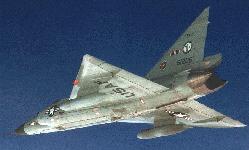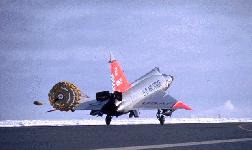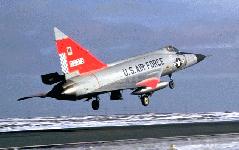|
Posted on 11/20/2003 12:00:45 AM PST by SAMWolf
|
|
 are acknowledged, affirmed and commemorated.
|

| Our Mission: The FReeper Foxhole is dedicated to Veterans of our Nation's military forces and to others who are affected in their relationships with Veterans. In the FReeper Foxhole, Veterans or their family members should feel free to address their specific circumstances or whatever issues concern them in an atmosphere of peace, understanding, brotherhood and support. The FReeper Foxhole hopes to share with it's readers an open forum where we can learn about and discuss military history, military news and other topics of concern or interest to our readers be they Veteran's, Current Duty or anyone interested in what we have to offer. If the Foxhole makes someone appreciate, even a little, what others have sacrificed for us, then it has accomplished one of it's missions. We hope the Foxhole in some small way helps us to remember and honor those who came before us.
|
|
A Shattered Dream A peaceful ranch, once a stage stop on the Santa Fe Trail, rests in a circular valley clasped by steep mountains. Spanish conquistadors named these mountains Sangre de Cristo, "blood of Christ," but in 1862, it was the blood of warring brothers that bathed the land near Pigeon's Ranch.  (Roy Anderson, artist; Courtesy of Pecos National Historical Park) This battle--the Battle of Glorieta Pass--represented the high water mark for a bold Confederate offensive into Union Territory on the western frontier. Here volunteers from Colorado clashed with tough Texans intent on conquering New Mexico. Victory here would be a necessary prelude to detaching the western states from the Union and expanding the Confederacy to the Pacific Ocean. Referred to as the "Gettysburg of the West" by many historians, this running battle along canyon and ridge from March 26-28, 1862 culminated in the retreat back to Texas of the invading Confederate forces. Glorieta Pass was another great turning point in the Civil War, the battle that shattered the western dreams of the Confederate States of America. The trans-Mississippi West, New Mexico Territory in particular, was far removed from many of the passions and issues that defined the Civil War for people east of the Mississippi River. For large areas of the West that were recently won from Mexico or still organized under territorial government--where people were still struggling to survive in hostile environments--arguments over secession and states rights may have seemed rarified. Nonetheless, men answered the call to join eastern armies, so the frontier armies were drastically reduced. Indian raids began to increase as some tribes seized the chance to regain lost territory while others turned to raiding for subsistence, their U.S. treaty allotments having been disrupted by the war. Yet, the Civil War was not strictly an eastern war, and in 1862 Confederate forces invaded New Mexico Territory.  Major John M. Chivington and First Colorado Volunteers on the edge of Glorieta Mesa overlooking Confederate supply wagons at Johnson's Ranch (courtesy Peter de La Fuente, Wyeth Hurd Gallery, Santa Fe) Henry Sibley, who resigned his commission in the U.S. Army to join the Confederate Army, realized that the void created in the West could be an opportunity for the South. After raising a brigade of mounted Texas riflemen during the summer of 1861, Sibley led his 2,500 men to Fort Bliss and launched a winter invasion up the Rio Grande Valley. Colonel Edward Canby, who had been appointed the Union Commander of the Department of New Mexico in June 1861, anticipated the invasion and had already begun to consolidate his 2,500 regular army troops. By early 1862, Canby had almost 4,000 soldiers he could put into the field. Sibley's Brigade approached Canby's Union forces near Fort Craig in south-central New Mexico. Threatening to cut off the fort by controlling a nearby ford, Sibley drew Canby's soldiers out from the fort and engaged them in a closely contested battle at Valverde on February 21, 1862. The smaller Confederate force prevailed against Canby's troops, who retreated to the security of nearby Fort Craig. Sibley believed the U.S. forces had been defeated too soundly to present a rear-guard threat, so he advanced north. The Confederates occupied Albuquerque on March 2. Sibley then sent the Fifth Texas Regiment, commanded by Major Charles Pyron, to the unprotected territorial capital of Santa Fe. The few Union troops retreated to Fort Union, destroying ammunition and supplies.  Maj. John M. Chivington, First Colorado Volunteers, led Union flanking maneuver during Battle of Glorieta Pass (courtesy Denver Public Library, Western History Collection). The only thing that appeared to be standing between Sibley's Confederate Brigade and Colorado was Fort Union, the major army depot on the Santa Fe Trail. By seizing the supplies and weapons kept at Fort Union, the Confederates would be able to continue their march north through Raton Pass to Denver, the territorial capital of Colorado. The First Colorado Volunteers, an infantry brigade of 950 miners, were quickly organized under the command of Colonel John P. Slough. They marched the 400 miles from Denver through the deep snow of Raton Pass to Fort Union in only 13 days, arriving at the fort on March 10. After a brief rest and re-supply, Slough defied orders to remain at Fort Union. Joined by some regular army troops and New Mexico volunteers, Slough's 1,350 soldiers departed Fort Union on March 22, and they followed the Santa Fe Trail westward to meet the enemy. By March 25, the Union advance troops, under the command of Major John M. Chivington, set up Camp Lewis at Kozlowski's Stage Stop east of Glorieta Pass, a gap in the Sangre de Cristo Mountains. Meanwhile, Pyron's Fifth Texas Regiment had left Santa Fe, following the Santa Fe Trail eastward, marching on Fort Union. After following a southward swing through Glorieta Pass, he intended to join with other Confederate troops. Pyron's Texans camped at Johnson's Ranch in Apache Canyon, just west of Glorieta Pass, unaware of the Union troops only nine miles away.  3rd Cavalry Supply Wagons relocate to support the Regiment near Glorieta Pass, New Mexico Territory, March 1862 On the morning of March 26, 1862, a scouting party of Colorado Volunteers led by Chivington left Camp Lewis to locate the Texans. They discovered and captured a Confederate scouting party in Glorieta Pass, then ran into the main body of the Confederate force in Apache Canyon, about 16 miles east of Santa Fe. A two-hour scrimmage, known as the Battle of Apache Canyon, ensued. Although Chivington captured 70 Confederate soldiers, he fell back to Pigeon's Ranch. By evening, both sides called a truce to tend to their wounded. The following day, when Union spies notified Colonel Slough that the Confederates had been reinforced, Slough decided to divide his forces. Slough's 900 soldiers would proceed west along the Santa Fe Trail and block Glorieta Pass, while Chivington and Lieutenant Colonel Manuel Chavez of the New Mexico Volunteers would take 450 men over Glorieta Mesa to attack the Confederate right flank or rearguard. Colonel Scurry decided to leave his supply train at Johnson's Ranch and march his 900 men eastward along the Santa Fe Trail the next morning to force the battle where he wanted it. On the morning of March 28, Slough's men broke ranks near Pigeon's Ranch to fill their canteens at Glorieta Creek. Scurry's quickly advancing Confederates came upon the Union troops and opened fire on them. The Union soldiers quickly formed a defensive line along Windmill Hill, but an hour later, fell back to Pigeon's Ranch.  Battle of Apache Canyon--March 26, 1862: A. Upper Battlefield--2:30 to 3:00pm Union troops under Chivington encounter Confederate vanguard under Pyron. Confederates retreat. Union forces pursue the Confederates. B. Lower Battlefield--3:30 to 4:30pm Chivington continues flanking strategy. Fierce fighting erupts. Pyron's forces retreat to Johnson's Ranch. Chivington withdraws to Kozlowski's Stage Stop. Battle of Glorieta Pass (Pigeon's Ranch Action)--March 28, 1862: 1. 8:00am--Union forces advance toward Confederates in Apache Canyon. 2. Confederates advance through Glorieta Pass. 3. Opening Action--10:00am to 11:00am Confederates under Scurry, Union under Slough engage. 4. Main Battle--Noon to 4:00pm Slough establishes strong defense. Scurry attacks. Slough pulls back to third position. 5. Third Position--4:00 to 5:00pm Union holding action repulses Confederate's final charge. Slough pulls troops back to Kozlowski's Stage Stop. Battle of Glorieta Pass (Canoncito Action)--March 28, 1862: I. Chivington's flanking movement. II. Chivington reaches the edge of the mesa overlooking Johnson's Ranch. III. Union troops attack up canyon. Union forces burn wagons and supplies. IV. Remaining Confederates escape towards Santa Fe. Scurry's Confederate soldiers faced the Union artillery at Pigeon's Ranch and Artillery Hill for three hours, and finally outflanked the Union right. From Sharpshooter's Ridge they could fire down on the Union troops, so Slough ordered another retreat, setting up a third battle line a short distance east of Pigeon's Ranch. The Texans charged the line shortly before sunset. Slough ordered his soldiers back to Camp Lewis leaving the Confederates in possession of the field. Both sides were exhausted after six hours of fighting, each having sustained more than 30 killed and 80 wounded or missing.  (Photo by Ben Wittide; Courtesy Museum of New Mexico, Neg. No. 15783) The first known photographs of the battlefield sites in Apache Canyon and Glorieta Pass were taken in 1880. This 1880 photo shows Pigeon's Ranch much the same as it probably appeared on March 28, 1862. The Santa Fe Trail runs in between ranch structures. Initial contact between the Texans and Pike's Peak miners occurred half a mile up the trail towards Glorieta Pass and west of the ranch, in the area shown in the upper right hand corner of the picture. Colonel Slough pulled his forces back to form a second defensive line of battle anchored at the center around the ranch buildings Believing he had won the battle, Scurry soon received devastating news. After a 16-mile march through the mountains, the Union force led by Major Chivington had come upon the Confederate supply train at Johnson's Ranch. They had driven off the few guards, slaughtered 30 horses and mules, spiked an artillery piece, taken 17 prisoners, and burned 80 wagons containing ammunition, food, clothing, and forage. Scurry was forced to ask for a cease-fire. Lacking vital supplies, Scurry could no longer continue his march on Fort Union so he retreated to Santa Fe. Two weeks later, General Sibley ordered his army to retreat from Santa Fe and relinquished control of Albuquerque. There was no further Confederate attempt to invade the western territories. The Battle of Glorieta Pass had decided conclusively that the West would remain with the Union.
|
he was REALLY good at killing innocent women & children, but not so great at fighting ARMED warriors!
free dixie,sw
The dream of a confederate empire was probably just a dream. The terrain in the arid West was not conducive to plantation agriculture and slavery would not be economical. New Mexico had Spanish settlements for centuries by the 1860's and they wouldn't be keen on Confederate occupation. The Colorado settlements in the Pike's Peak and Denver region were very new, just began with the gold rush. Still, most of the settlers and miners were Union men. Such a small force would have had a hard time keeping such a vast area under occupation.
You can visit the battlefield park today - its just off the highway that transits the Pass into Santa Fe. Fort Union is also a historical park and is an interesting visit.
I wonder what was going through the Confederate commander's mind in leaving a Union army and fort in his rear to advance on Santa Fe and Fort Union. Even if he had managed to advance into Colorado, couldn't the federals take back Albuquerque and Santa Fe and cut him off from his communication and supply line???
The early history of the area is interesting. New Mexico and Arizona were originally all New Mexico Territory. Later, Arizona was split off. New Mexico trended Republican while Arizona, with many southerners and copperheads, trended Democrat. In the 20th century new immigrants and political attitudes reversed the situation.
The Union advances on the Mississippi seem to have kept the trans-Mississippi Confederacy mostly a backwater in the war, however.
The major political issue before the Civil War was whether or not slavery could extend to the territories. Under the Missouri Comporomise New Mexico and Arizona would have been eligible to organize as slave states - many Northerners thought the South supported the Mexican War as a way to get more land for slave states. Then came Kansas-Nebraska that would allow those territories to decide by vote, which ignited the Bleeding Kansas conflict. But then the Supreme Court decided Dred Scott and overruled the Missouri Compromise, basically opening all the territories to slavery. The Republicans wanted to ban slavery in all territories, hoping it would die out in the states where it was allowed and not expand into new states. It was a hugh and series issue.
LOL! It was probably one of the most devisive issues in our history and even though IMHO States Rights was more the cause of the War. Slavery was used back then to obscure the real issues just like Civil Rights is used today.
|
Air Power |
The primary mission of the F-102 was to intercept and destroy enemy aircraft. It was the world's first supersonic all-weather jet interceptor and the USAF's first operational delta-wing aircraft. The delta wing control surfaces eliminated the need for horizontal control surfaces (stabilizer and elevators). Built by Convair (General Dynamics); the F-102 was the first all-weather supersonic jet interceptor. First to use the 'area rule' design concept which pushed the speed beyond the sonic barrier, the F-102 was to be superseded by the more advanced F-106, which could exceed 1,000 mph.
The concept known as the area rule is one of the great success stories of airplane design. The area rule says that the transonic wave drag of an aircraft is essentially the same as the wave drag of an equivalent body of revolution having the same cross-sectional area distribution as the aircraft. This fact, coupled with the knowledge of the shape that minimizes drag shows designers how to reshape the fuselage and other components of an airplane to reduce the drag of the total configuration. When an aircraft is sonic area ruled, the fuselage is shaped to an optimal area distribution. The result is the well-known "Coke bottle" shaped fuselage.
The first aircraft to which the area-rule principle was applied was the Convair F-102 delta-wing fighter. The YF-102 was basically an enlarged XF-92A delta. NACA, the Air Force, and the manufacturer already knew from wind tunnel tests that the YF-102's configuration rendered it incapable of meeting the interceptor performance specification, which called for supersonic speed. With its relatively low-thrust engine, the prototype of this supposed supersonic fighter was unable to pass through Mach 1.0. Convair redesigned the airplane on the basis of the area-rule principle developed by NACA Langley's Richard Whitcomb to give it supersonic performance. The modified aircraft easily passed through Mach 1.0 and entered the supersonic speed regime.
The F-102 made its initial flight on October 24, 1953, and became operational with the Air Defense Command (ADC) in 1956. At the peak of deployment in the late 1950s, F-102s equipped more than 25 ADC squadrons. Convair built 1,101 F-102s, 975 of which were F-102As. The USAF also bought 111 TF-102s as combat trainers with side-by-side seating.
In a combat situation, after electronic equipment on the F-102 had located an enemy aircraft, the F-102's radar would guide it into position for attack. At the proper moment, the electronic fire control system would automatically fire the F-102's air-to-air rockets and missiles. This supersonic jet was one of the mainstays of the Air Defense Command in the 1960s. By 1974, surviving F-102s -- called "Deuces" -- had all been assigned to the ANG and to the air forces of Greece and Turkey.
Specifications:
Manufacturer: Convair Aviation
Primary Role: All weather Interceptor
Engine: One Pratt & Whitney J57; 16,000 lbs. of thrust, with afterburner.
Cost: $1,184,000
Dimensions:
Wing Span: 38 feet, 1 inch
Length: 68 feet, 4 inches
Height: 21 feet, 2 inches
Weight: 31,539 lbs. maximum
Performance :
Maximum speed: 810 mph
Cruising speed: 600 mph
Range: 1,000 miles
Service Ceiling: 55,000 feet
Armaments:
24 unguided 2.75 inch rockets
6 guided missiles






Disclaimer: Opinions posted on Free Republic are those of the individual posters and do not necessarily represent the opinion of Free Republic or its management. All materials posted herein are protected by copyright law and the exemption for fair use of copyrighted works.